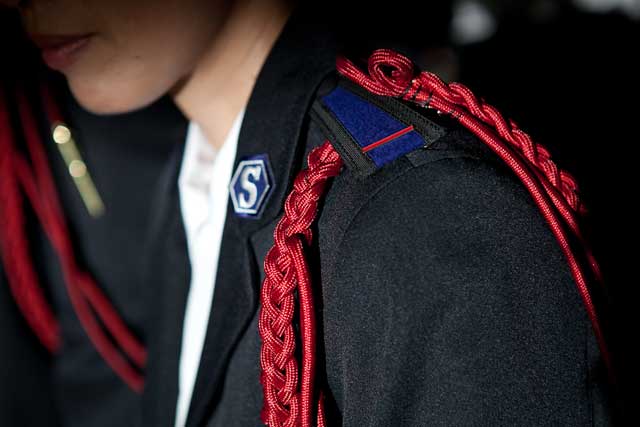Listen to this article
Listen to this article
Loading
Play
Pause
Options
0:00
-:--
1x
Playback Speed- 0.5
- 0.6
- 0.7
- 0.8
- 0.9
- 1
- 1.1
- 1.2
- 1.3
- 1.5
- 2
Audio Language
- English
- French
- German
- Italian
- Spanish
Open text
the good, bad and ugly. dealing with the ‘curved blade’ of anger in our lives. by brent stewart –. anger is an emotion we all experience in varying degrees throughout our lives, which makes it key to understand. “holding anger is poison,” wrote mitch albom in “the five people you meet in heaven” (hachette books, 2003). “it eats you from the inside. we think that hating is a weapon that attacks the person who harmed us. but hatred is a curved blade. and the harm we do, we do to ourselves.”. i can personally relate. i’ve experienced all-consuming anger that makes it difficult to work, eat or sleep. i suspect you’ve had a similar encounter with this emotion—we all have. what is anger, really? webster defines it as “a strong feeling of being upset or annoyed because of something wrong or bad,” but i like this definition by national certified counselor lynette hoy: “an aversive state ranging from annoyance to rage. anger is a strong feeling of displeasure and antagonism or indignation. it’s an automatic reaction to any real or imagined insult, frustration or injustice. when someone puts you down—your initial feelings of humiliation are turned into anger—an emotional reaction needing to be expressed. so, anger is ultimately a combination of physical, emotional and cognitive responses to certain triggers.”. yet, anger is not always the same. molly lyda, anger management facilitator, wrote that anger can be healthy and productive if it’s used or channeled in helpful ways. anger is an energy, she wrote, and a signal that tells us who we are and what is important to us. for example, anger can be a biological response to protect ourselves in danger. i experienced this as a soldier in the u.s. army, when my drill sergeant said terrible things to me. i felt like hurting him, but i chose to put my anger to work by showing him that his words were not going to make me quit. anger can also benefit relationships if used to help communicate our needs, and can reduce violence if the anger signals that there is an issue that needs to be resolved, according to dr. jeremy dean, psychologist and founder and author of the popular website psyblog. however, anger can also have a bad side—including numerous health effects, from a depressed immune system, to a higher severity of anxiety symptoms, higher levels of depression, and higher risk of stroke. one study found that in the two hours after an angry outburst, the chance of heart attack doubles. at one point in my life, i used drugs and alcohol to push down all feelings of hurt and anger. i was angry all the time, and the result was that my heart almost stopped working. my blood pressure shot to dangerous levels that put me in great risk of a stroke. i was a mess on the inside, and i looked worse on the outside. between my anger and the substance abuse i used to stuff the anger down, i almost killed myself. in some cases, anger is even more ugly. according to the national institute of mental health, intermittent explosive disorder (ied) affects as many as 7 percent of adults and one in 12 teenagers in the u.s. who have outbursts disproportionate to the provocation. ied is characterized by failure to resist aggression, resulting in destruction. it is an impulse control disorder that has been suggested as the underlying cause of road rage, yet is often later met with embarrassment and remorse. i recall such outbursts in my own life. i once had my own business installing hardwood floors, and at times i would get so angry at myself that i couldn’t contain it. i even threw an $800 saw out the window one day—one of many explosive examples. so how do we manage our anger? when something causes your blood to boil, think about the anger cycle, a graphic representation of the emotion developed by agape youth and family ministries. that initial event results in interpretation, which can lead us out of anger (the “escape”) or toward our initial response—anger. we can again choose an escape route, or choose to be angry. that leads to another escape or demonstrate choice, before eventual cool down. as you can see, the cycle is permeated with choices and with ways out. we choose to be angry. we choose to respond. what will that response look like in your life, and will it be marked with the good, bad or ugly characteristics of the anger you face?
Open context player
Close context player
Plays:-Audio plays count
the good, bad and ugly. dealing with the ‘curved blade’ of anger in our lives. by brent stewart –. anger is an emotion we all experience in varying degrees throughout our lives, which makes it key to understand. “holding anger is poison,” wrote mitch albom in “the five people you meet in heaven” (hachette books, 2003). “it eats you from the inside. we think that hating is a weapon that attacks the person who harmed us. but hatred is a curved blade. and the harm we do, we do to ourselves.”. i can personally relate. i’ve experienced all-consuming anger that makes it difficult to work, eat or sleep. i suspect you’ve had a similar encounter with this emotion—we all have. what is anger, really? webster defines it as “a strong feeling of being upset or annoyed because of something wrong or bad,” but i like this definition by national certified counselor lynette hoy: “an aversive state ranging from annoyance to rage. anger is a strong feeling of displeasure and antagonism or indignation. it’s an automatic reaction to any real or imagined insult, frustration or injustice. when someone puts you down—your initial feelings of humiliation are turned into anger—an emotional reaction needing to be expressed. so, anger is ultimately a combination of physical, emotional and cognitive responses to certain triggers.”. yet, anger is not always the same. molly lyda, anger management facilitator, wrote that anger can be healthy and productive if it’s used or channeled in helpful ways. anger is an energy, she wrote, and a signal that tells us who we are and what is important to us. for example, anger can be a biological response to protect ourselves in danger. i experienced this as a soldier in the u.s. army, when my drill sergeant said terrible things to me. i felt like hurting him, but i chose to put my anger to work by showing him that his words were not going to make me quit. anger can also benefit relationships if used to help communicate our needs, and can reduce violence if the anger signals that there is an issue that needs to be resolved, according to dr. jeremy dean, psychologist and founder and author of the popular website psyblog. however, anger can also have a bad side—including numerous health effects, from a depressed immune system, to a higher severity of anxiety symptoms, higher levels of depression, and higher risk of stroke. one study found that in the two hours after an angry outburst, the chance of heart attack doubles. at one point in my life, i used drugs and alcohol to push down all feelings of hurt and anger. i was angry all the time, and the result was that my heart almost stopped working. my blood pressure shot to dangerous levels that put me in great risk of a stroke. i was a mess on the inside, and i looked worse on the outside. between my anger and the substance abuse i used to stuff the anger down, i almost killed myself. in some cases, anger is even more ugly. according to the national institute of mental health, intermittent explosive disorder (ied) affects as many as 7 percent of adults and one in 12 teenagers in the u.s. who have outbursts disproportionate to the provocation. ied is characterized by failure to resist aggression, resulting in destruction. it is an impulse control disorder that has been suggested as the underlying cause of road rage, yet is often later met with embarrassment and remorse. i recall such outbursts in my own life. i once had my own business installing hardwood floors, and at times i would get so angry at myself that i couldn’t contain it. i even threw an $800 saw out the window one day—one of many explosive examples. so how do we manage our anger? when something causes your blood to boil, think about the anger cycle, a graphic representation of the emotion developed by agape youth and family ministries. that initial event results in interpretation, which can lead us out of anger (the “escape”) or toward our initial response—anger. we can again choose an escape route, or choose to be angry. that leads to another escape or demonstrate choice, before eventual cool down. as you can see, the cycle is permeated with choices and with ways out. we choose to be angry. we choose to respond. what will that response look like in your life, and will it be marked with the good, bad or ugly characteristics of the anger you face?
Listen to this article
















